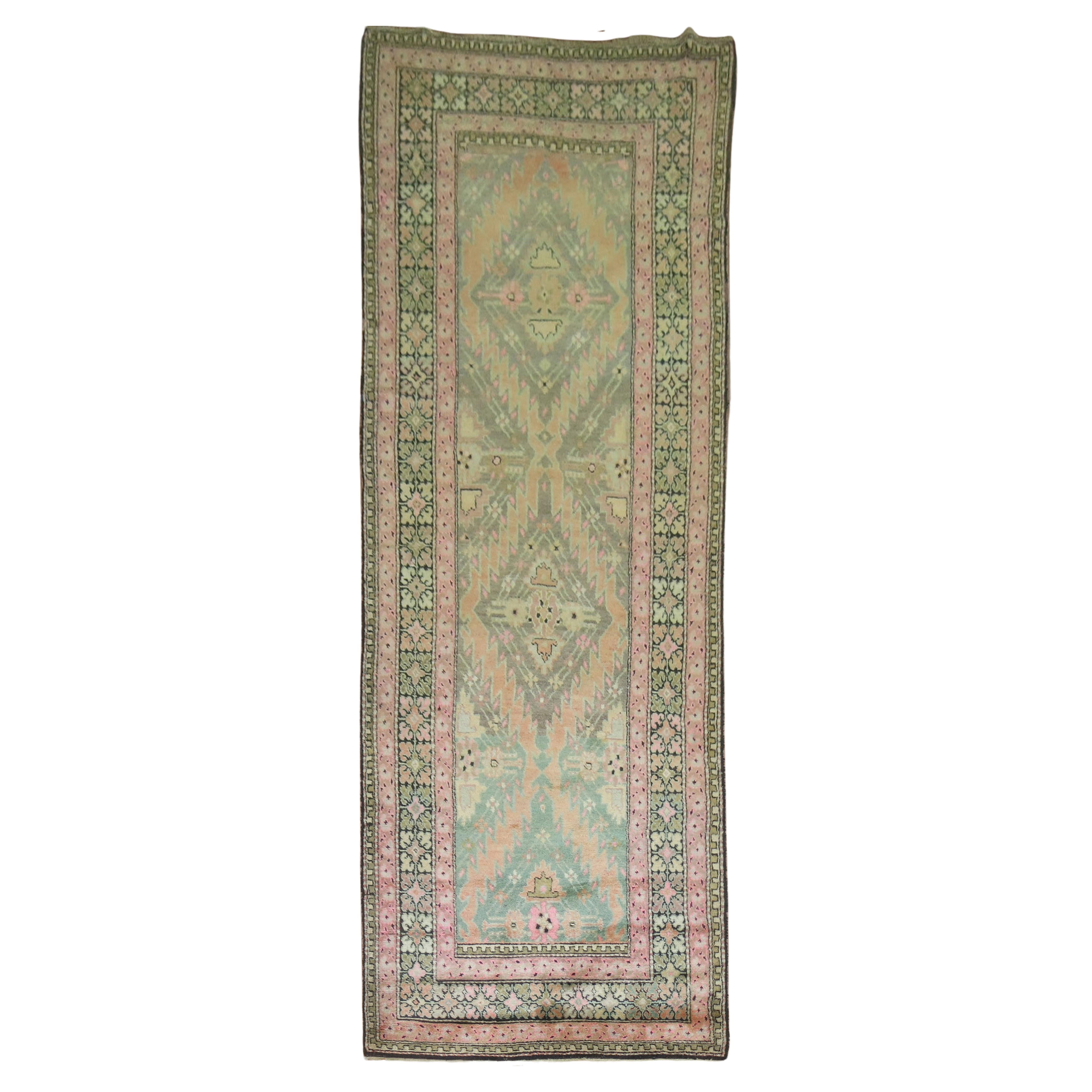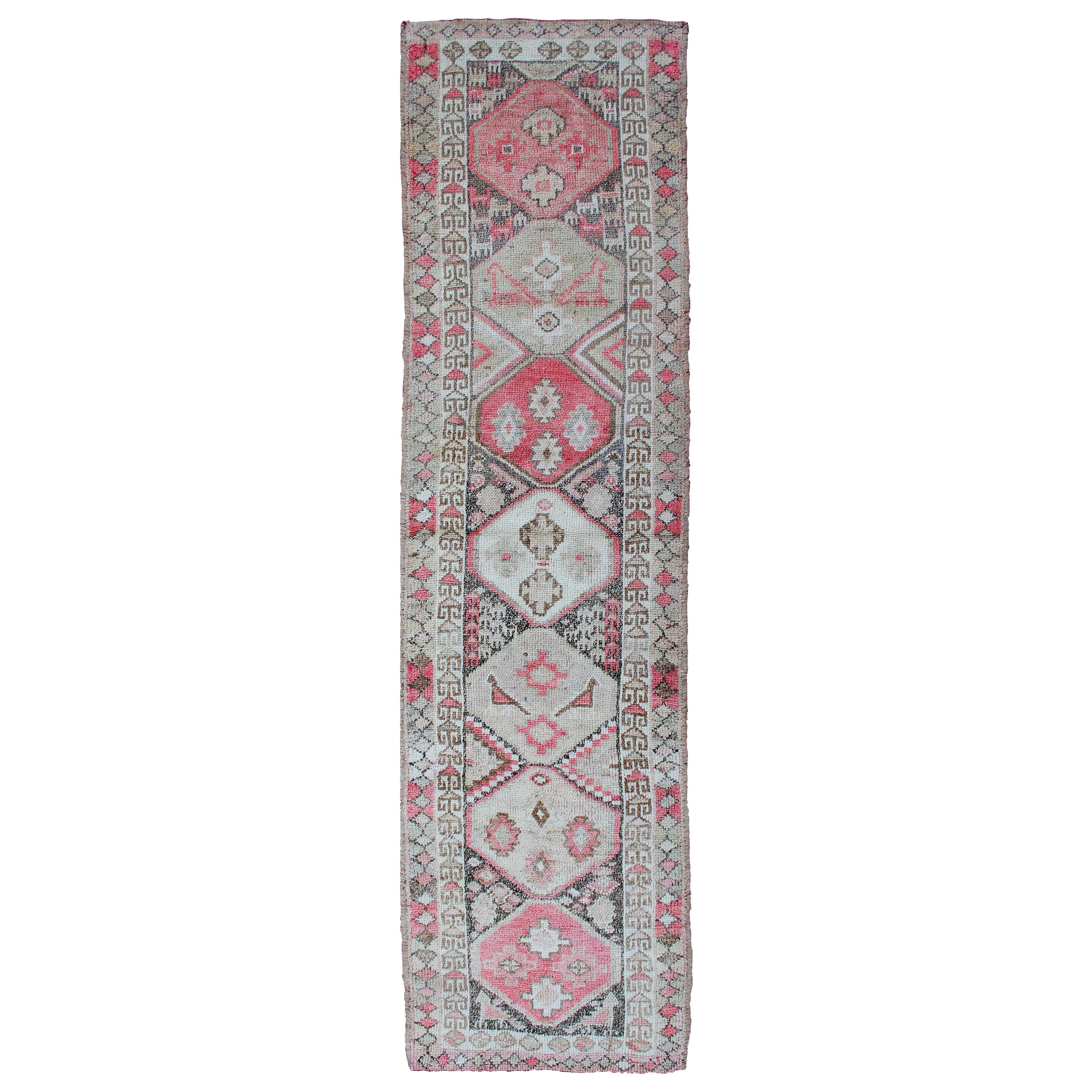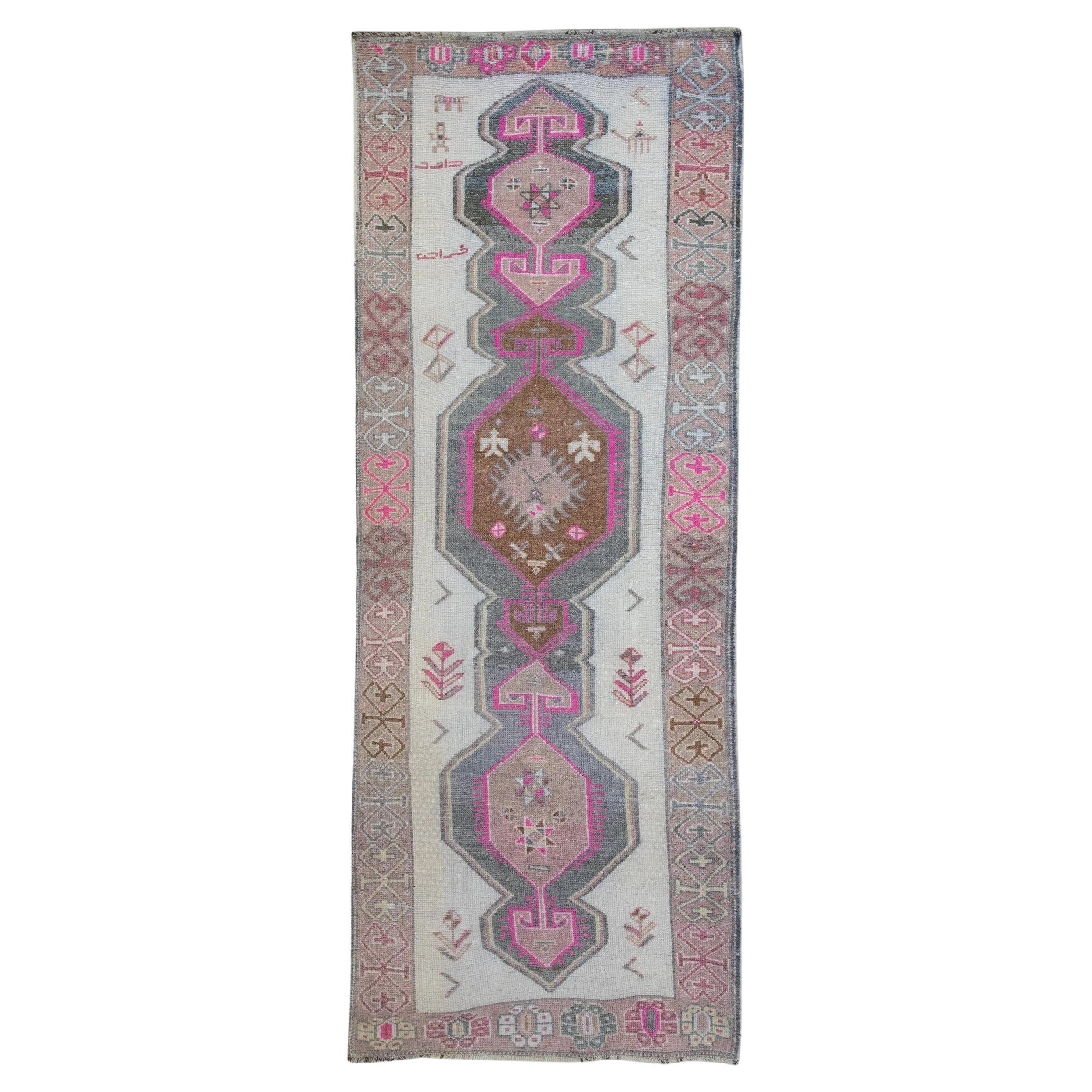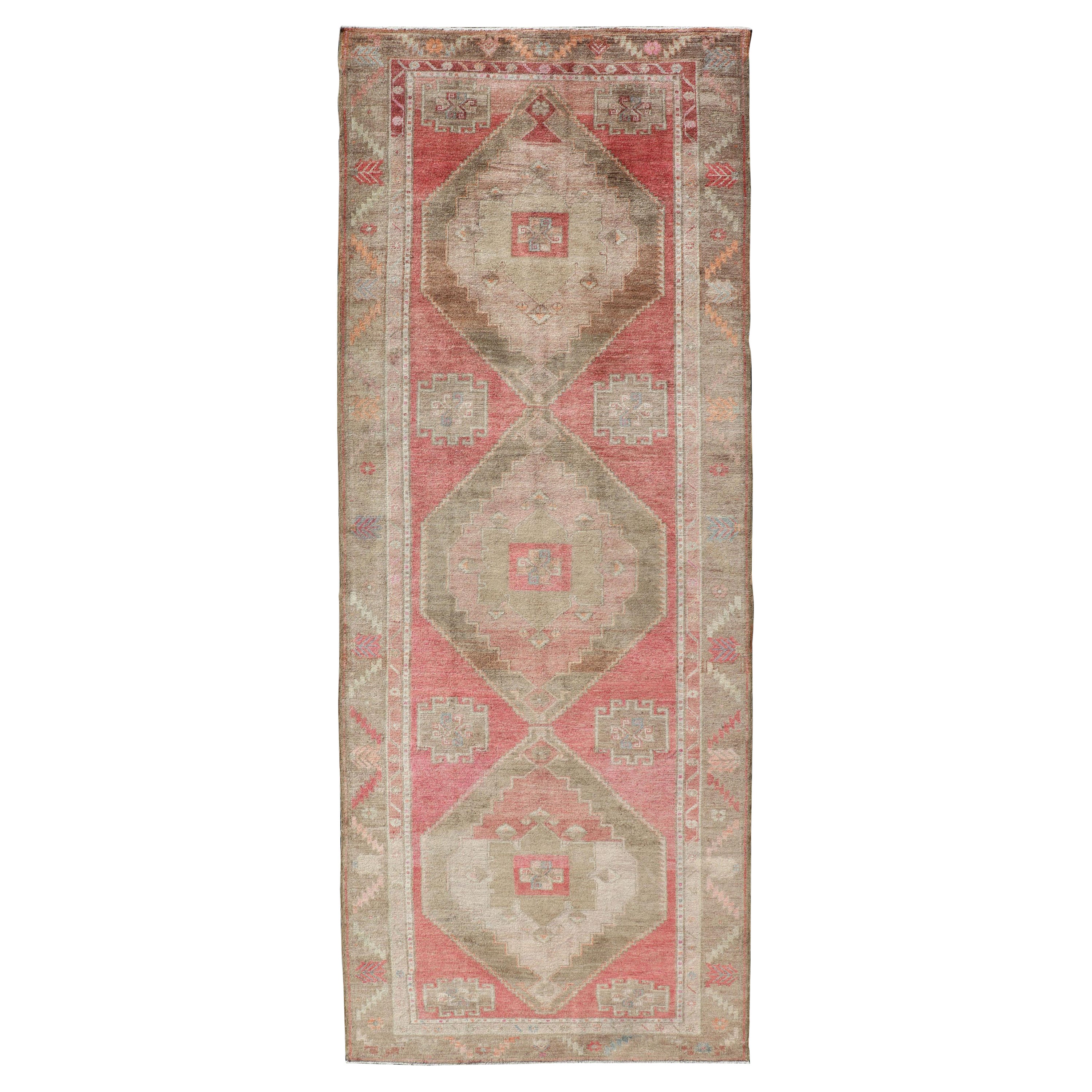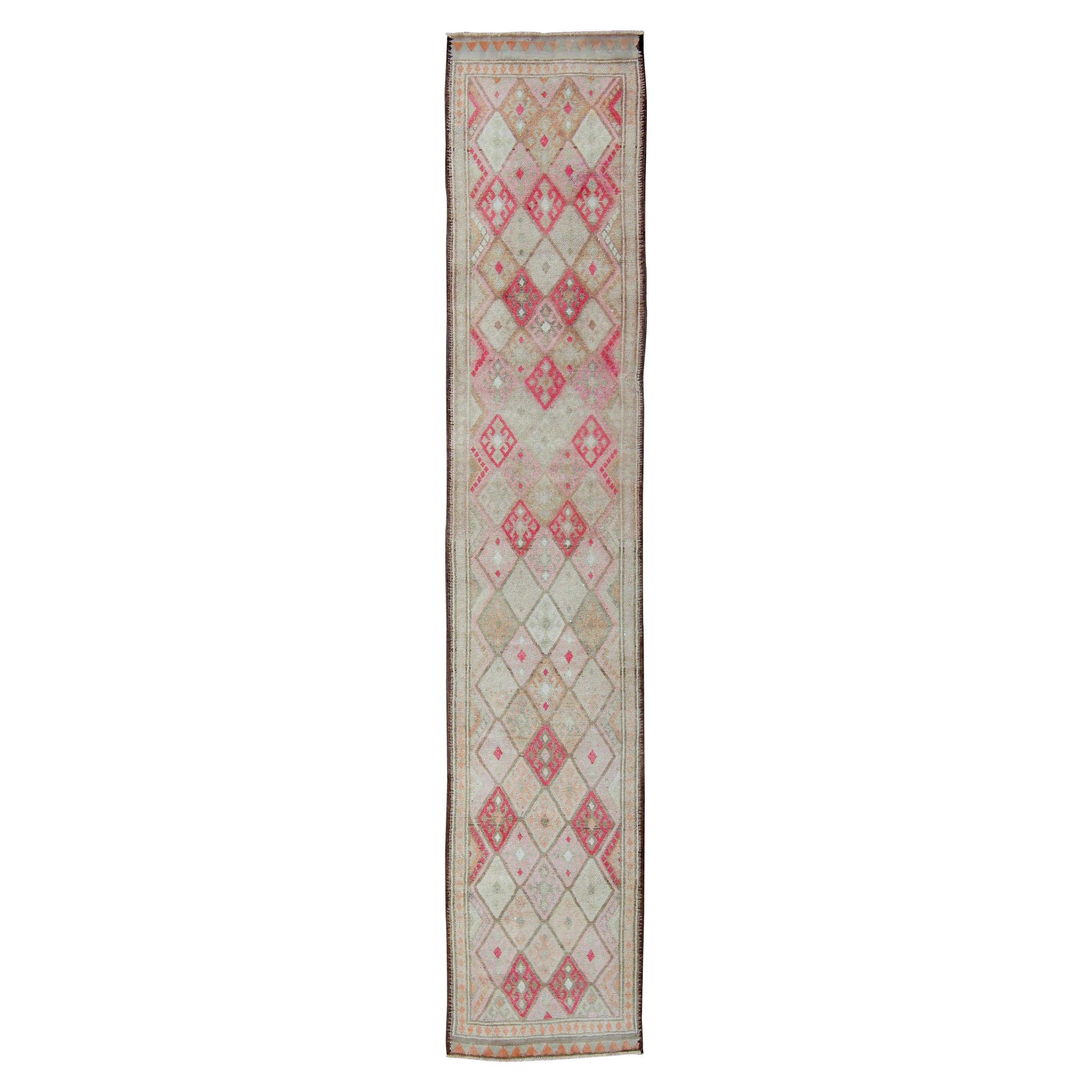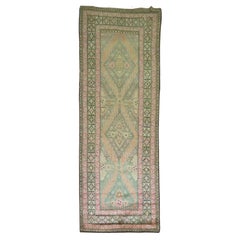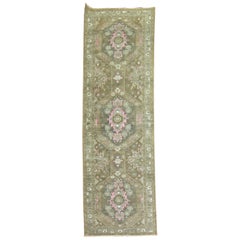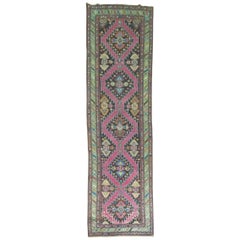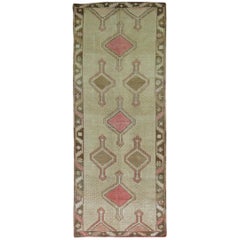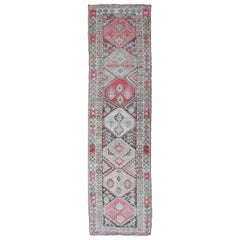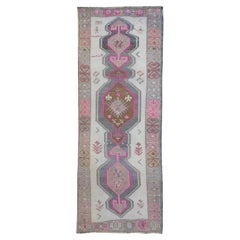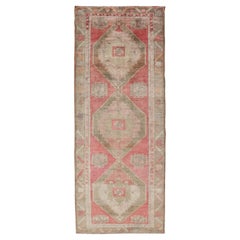Items Similar to Shabby Chic 20th Century Turkish Runner with Pink and Green Accent Colors
Want more images or videos?
Request additional images or videos from the seller
1 of 5
Shabby Chic 20th Century Turkish Runner with Pink and Green Accent Colors
$1,440
$1,80020% Off
£1,100.96
£1,376.2020% Off
€1,268.08
€1,585.1020% Off
CA$2,017.88
CA$2,522.3520% Off
A$2,252.77
A$2,815.9720% Off
CHF 1,180.42
CHF 1,475.5320% Off
MX$27,576.18
MX$34,470.2220% Off
NOK 14,991.35
NOK 18,739.1920% Off
SEK 14,134.94
SEK 17,668.6720% Off
DKK 9,463.81
DKK 11,829.7620% Off
Shipping
Retrieving quote...The 1stDibs Promise:
Authenticity Guarantee,
Money-Back Guarantee,
24-Hour Cancellation
About the Item
Vintage Anatolian runner with repetitive diamond motif throughout in gray, cream, pink and beige accents.
Measures: 3'3" x 7'.
- Dimensions:Width: 39 in (99.06 cm)Length: 84 in (213.36 cm)
- Style:Egyptian Revival (In the Style Of)
- Materials and Techniques:Wool,Hand-Knotted
- Place of Origin:
- Period:
- Date of Manufacture:circa 1940
- Condition:Wear consistent with age and use. age related wear.
- Seller Location:New York, NY
- Reference Number:Seller: r4194 J & D Oriental Rug Co.1stDibs: LU90873589902
About the Seller
5.0
Platinum Seller
Premium sellers with a 4.7+ rating and 24-hour response times
Established in 1975
1stDibs seller since 2011
1,550 sales on 1stDibs
Typical response time: <1 hour
- ShippingRetrieving quote...Shipping from: New York, NY
- Return Policy
Authenticity Guarantee
In the unlikely event there’s an issue with an item’s authenticity, contact us within 1 year for a full refund. DetailsMoney-Back Guarantee
If your item is not as described, is damaged in transit, or does not arrive, contact us within 7 days for a full refund. Details24-Hour Cancellation
You have a 24-hour grace period in which to reconsider your purchase, with no questions asked.Vetted Professional Sellers
Our world-class sellers must adhere to strict standards for service and quality, maintaining the integrity of our listings.Price-Match Guarantee
If you find that a seller listed the same item for a lower price elsewhere, we’ll match it.Trusted Global Delivery
Our best-in-class carrier network provides specialized shipping options worldwide, including custom delivery.More From This Seller
View AllZabihi Collection Pink and Green Vintage Karabagh Runner
Located in New York, NY
A Russian Karabagh runner in funky colors. Predominant accents in lime green and pink.
3'8'' x 10'7''
Category
20th Century Russian Tibetan Russian and Scandinavian Rugs
Materials
Wool
Vintage Turkish Runner in Brown and Pink
Located in New York, NY
A Turkish runner with an sparkling shades of pink accents on a chocolate brown ground.
Category
20th Century Turkish Futurist Turkish Rugs
Materials
Wool
Vintage Karabagh Runner in Bright Pink & Chartreuse
Located in New York, NY
Vintage Karabagh runner predominant accents in pink and chartreuse on a brown colored ground.
3'10'' x 12'9''
Karabagh are one of the more popular types of Caucasian rugs that were...
Category
20th Century Russian Victorian Russian and Scandinavian Rugs
Materials
Wool
Tribal Vintage Turkish Gallery Pink Accent Rug
Located in New York, NY
Quirky mid-20th century Turkish gallery rug. Pink and brown medallions on a khaki ground and brown border, circa 1940.
Size: 4'7” x 12'5”.
Category
20th Century Asian Tribal Turkish Rugs
Materials
Wool
Turkish Oushak Runner with Pink Hues
Located in New York, NY
Turkish runner with a beige field, accents in browns and pink.
Measures: 3'6" x 9'5".
Category
Mid-20th Century Turkish Oushak Turkish Rugs
Materials
Wool
Geometric Turkish Pink Brown Runner
Located in New York, NY
Vintage Turkish runner woven in Central Turkey in shades of pink and brown.
Measures: 29" x 12'6".
Category
Mid-20th Century Turkish Oushak Turkish Rugs
Materials
Wool
You May Also Like
Turkish Oushak Runner with Soft Coral, Ivory, and Pale Sage Tones and Geometric
Located in Atlanta, GA
Measures: 2'9 x 11'2
Turkish Oushak Runner with Soft Coral, Ivory, and Pale Sage Tones and Geometric. Keivan Woven Arts / Rug EN-165340, country of origin / type: Turkey / Oushak, c...
Category
Vintage 1950s Turkish Oushak Turkish Rugs
Materials
Wool
Vintage Tribal Runner in Pink Beige and Green Medallion Pattern by Rug & Kilim
Located in Long Island City, NY
Originating from Turkey circa 1950-1960, a vintage tribal rug from a special curation of pieces newly acquired by R&K Principal Josh Nazmiyal. Hand-knotted in wool, the piece carries tribal medallions with an unusual emphasis on pink with beige and muted greens for a mid-century piece of this provenance.
Prevailing in good condition, a 4x10 runner...
Category
Vintage 1950s Turkish Tribal Turkish Rugs
Materials
Wool
1960s Pink Multicolor Vintage Turkish Runner 4'3" x 11'3"
By Asian Modern
Located in Houston, TX
Introducing a one-of-a-kind vintage Turkish hand-knotted wool rug, carefully crafted by skilled artisans using traditional techniques passed down through generations. This exquisite ...
Category
Vintage 1960s Turkish Tribal Turkish Rugs
Materials
Wool
$1,749 Sale Price
40% Off
Long Gallery Turkish Vintage Runner with Medallion Design in Green, Pink
Located in Atlanta, GA
Vintage wide and long gallery runner from Turkey with geometric Medallion design in various tones of pink, coral, tan and variety of beautiful green colors, rug EN-179586, country of origin / type: Turkey / Kars, circa 1940
This beautiful vintage Turkish runner features a Classic Geometric design wit bold and Minimalist design, The quality of this rug is enhanced by its lustrous wool. The ground is home to an interconnected multi-medallion design with various geometric motifs in their centers. Various color tones include taupe, muted red, pink coral, tan, light green and Green...
Category
Mid-20th Century Turkish Oushak Turkish Rugs
Materials
Wool
Vintage Turkish Oushak Runner in Soft Gray, Coral, and Ivory with Diamond Design
Located in Atlanta, GA
Measures: 2'9 x 14'.
Vintage Turkish Oushak Runner in Soft Gray, Coral, and Ivory with Diamond Design. Keivan Woven Arts / rug EN-165324, country of origin / type: Turkey / Oushak, c...
Category
Mid-20th Century Turkish Oushak Turkish Rugs
Materials
Wool
Antique Geometric Turkish Sivas Rug, Light Green Field, Pink & Dark Gray Borders
Located in New York, NY
This east Anatolian city carpet on cotton with a medium weave, shows a Zeychur/St. Andrew's multiplied into an allover lattice, on an ecru/green ground. Kuba-style border with serrat...
Category
Vintage 1930s Turkish Tribal Turkish Rugs
Materials
Wool
More Ways To Browse
Egyptian Revival Diamonds
Bamboo Table Round
Chaise Lounge Cushions
Oval Plaques
Pair X Stools
Pink Porcelain China
Small Bathroom Table
Wicker Man
Wood Bench With Cushion
Woven Seat Danish
18th Century Chinese Export Porcelain
1930S Vintage Travel Posters
African Chairs
Bar Trays
Chinese Pink Porcelain
Mahogany Side Tables Pair
Original Vintage Art Deco Mirror
Scandinavian Round Dining Table
